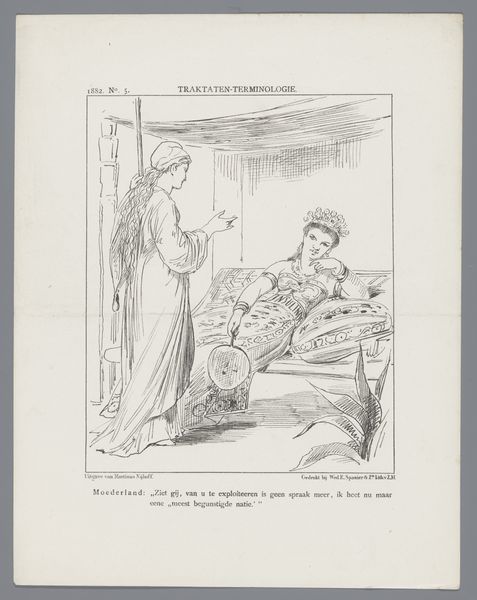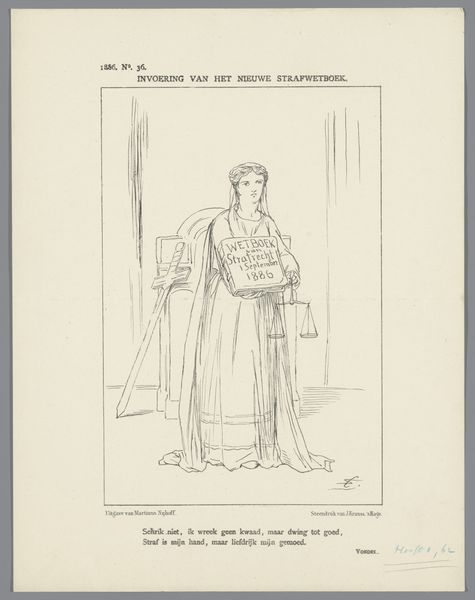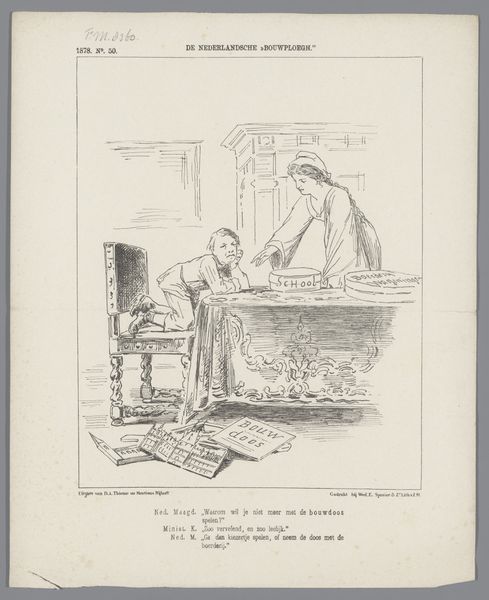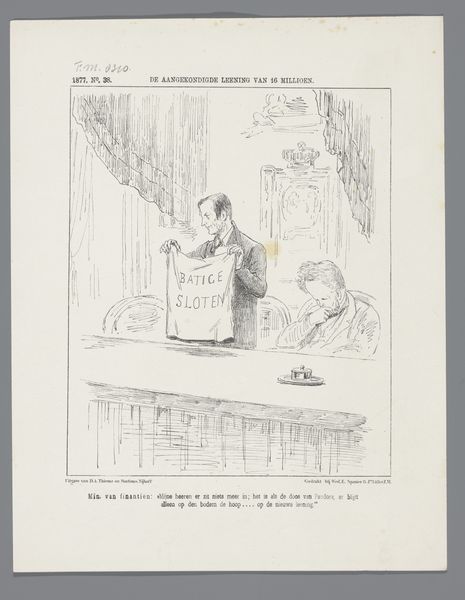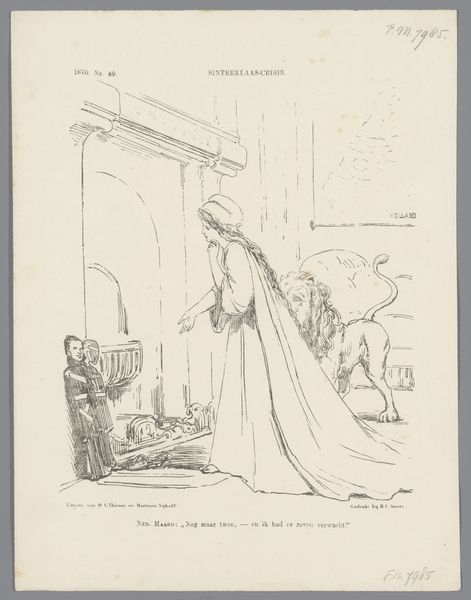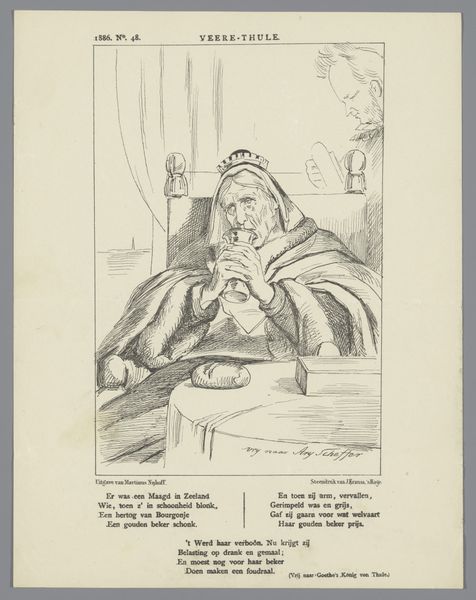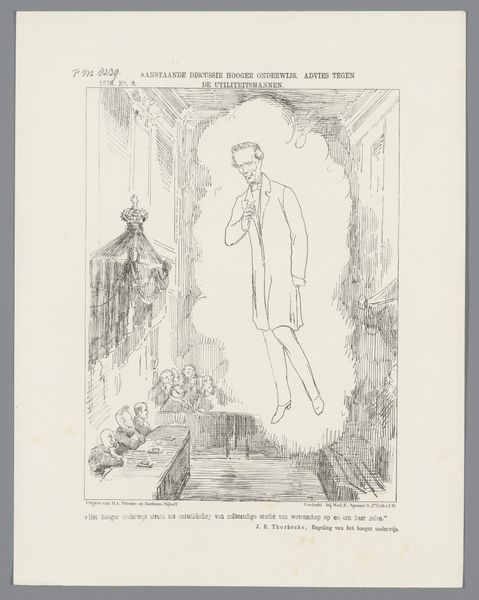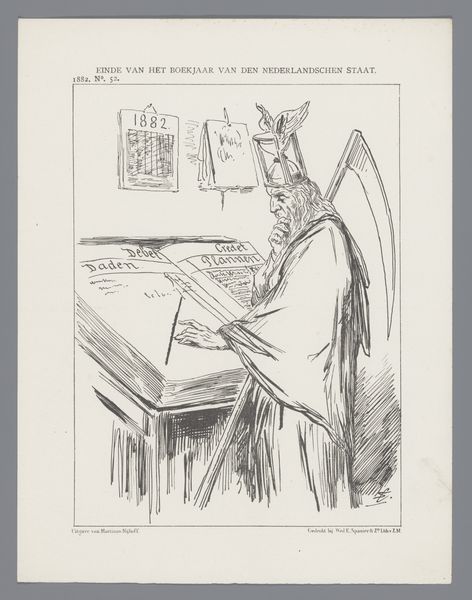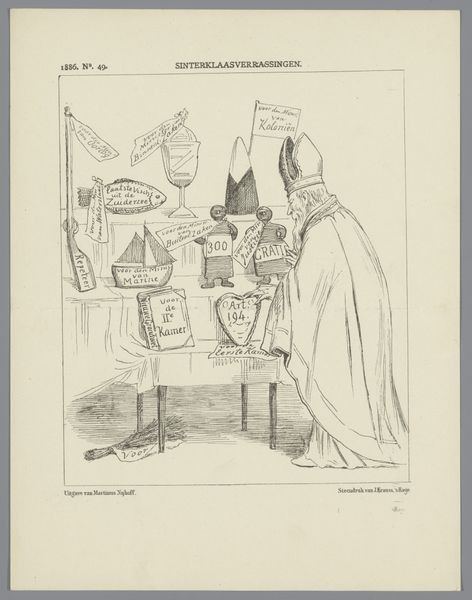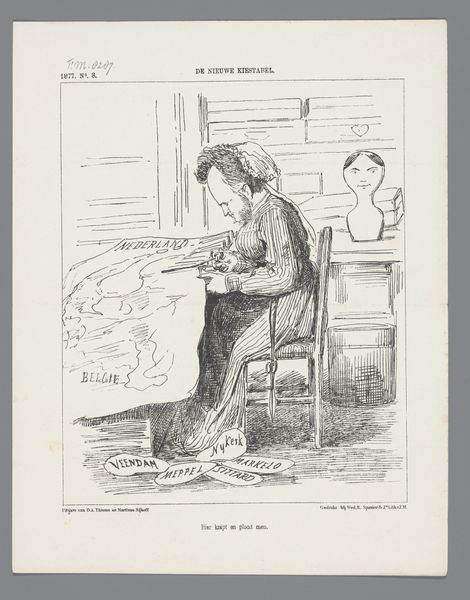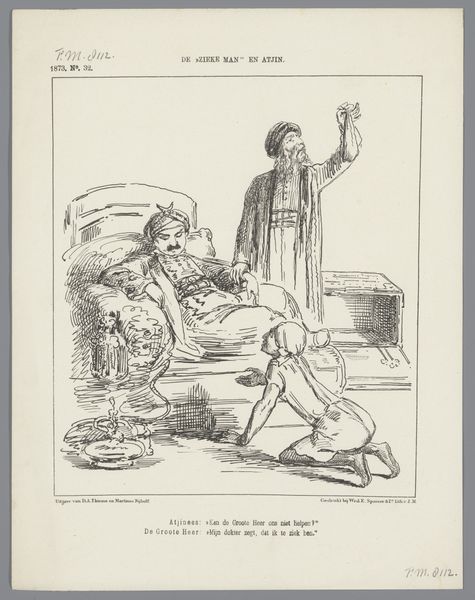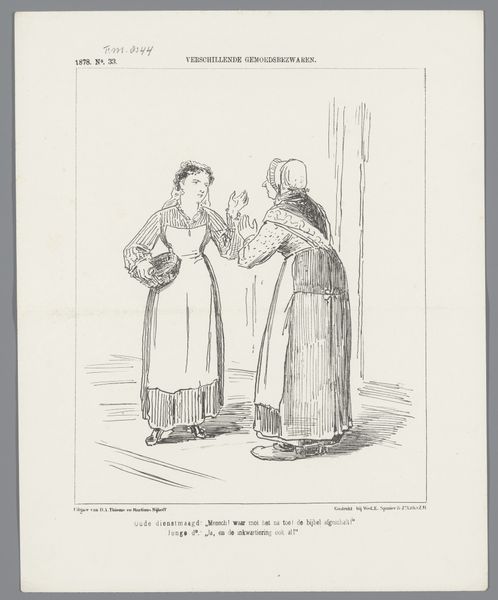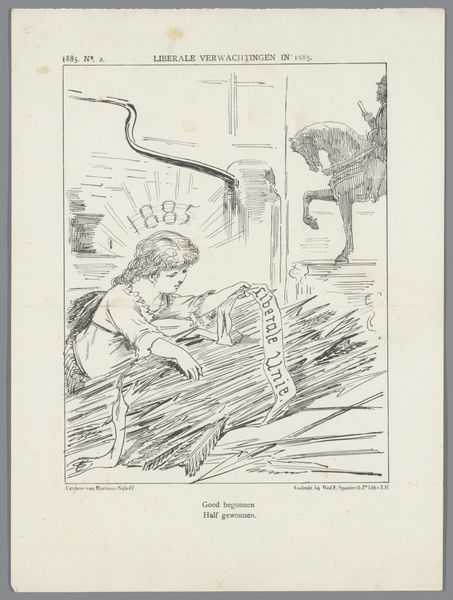
drawing, print, ink
#
drawing
# print
#
caricature
#
ink
Dimensions: height 275 mm, width 215 mm
Copyright: Rijks Museum: Open Domain
Curator: This caricature, "Spotprent op de politieke crisis, 1883," created by Johan Michaël Schmidt Crans, feels incredibly potent even today. The imagery, executed in ink as both a drawing and a print, screams of political manipulation and alchemy gone wrong. What's your initial read of this image? Editor: Well, I immediately notice the figure in the long robes, seemingly a wizard or scientist, hovering over a glass jar containing a tiny human figure labeled 'minister.' It has a slightly menacing feel, like he’s concocting some sort of political scheme. I'm curious about what's being critiqued here. How do you interpret this work through a socio-political lens? Curator: Absolutely. It's crucial to view this through the context of 1883. The image is rife with symbolism concerning power, influence, and potentially, corruption within the government. This character, mixing "humble Stoffen" to influence mankind speaks to a mistrust of those in authority and a deep suspicion surrounding their methods. Look closer—what might the positioning of the figure in relation to the 'minister' imply about control and agency? Editor: I guess it suggests a puppet master situation. The minister is contained, at the mercy of this alchemist's experiment. Were political cartoons common during this period as a form of social commentary? Curator: Precisely. And yes, satirical prints like this were powerful tools. They offered accessible critiques that transcended literacy. This one appears to question the ethical boundaries of political maneuvering, asking if those in power are truly serving the public good or merely conducting self-serving experiments. How might feminist theory shed further light on this power dynamic? Editor: Interesting. I never considered it. Is this criticism still relevant today, when the debate over political figures is constant? Curator: The visual language speaks volumes across time. It highlights the perpetual anxieties surrounding power and its potential abuse, a sentiment deeply rooted in various social and political structures, whether we examine race, class, or gender. This piece invites us to actively question who holds the reins and what their true agenda might be. Editor: It’s incredible how historical context amplifies the meaning. Thanks for shining a light on it! Curator: Indeed, understanding the intersection of art and society provides a powerful lens for interpreting not only the past but also the present.
Comments
No comments
Be the first to comment and join the conversation on the ultimate creative platform.
